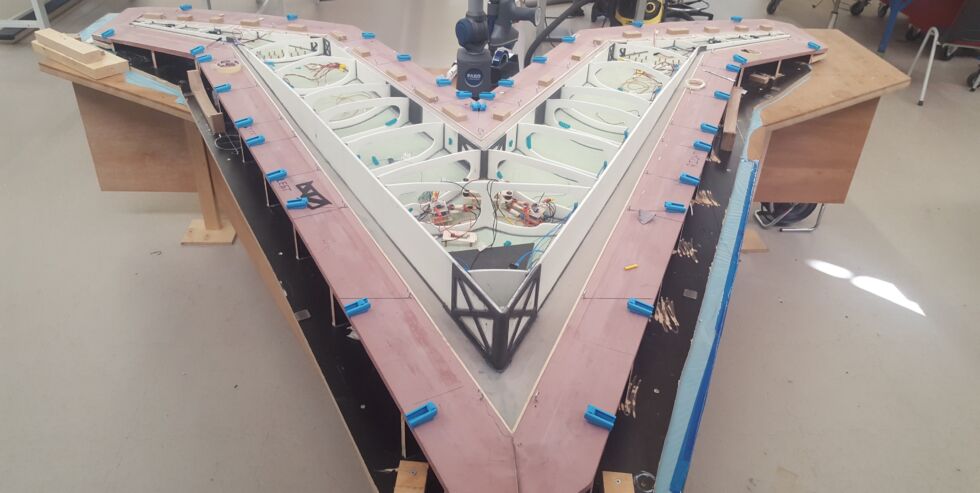When it comes to new airplanes, the airline industry rarely strays outside its comfort zone. "A cigar-shaped fuselage atop a pair of wings, with three stabilizers at the back" describes pretty much every airliner in service today. Convergent evolution means there aren't even very many double-deckers left, and most planes carry their engines under the wings. Which is why the Flying-V is such a breath of fresh air.
We looked at this weird-looking concept a couple of times in 2019. Originally, it was the brainchild of a graduate student at the Technical University of Berlin, then working on his thesis at Airbus. A year later, it attracted the attention of a research group at TU Delft in the Netherlands, which has worked with Dutch airline KLM to develop the idea as a celebration of the airline's centenary.
Instead of a conventional airliner design, the Flying-V is just a pair of fat wings joined in a V. Passengers would sit toward the front, along the leading edges, with cargo space closer to the wingtips. The jet engines are above the wings, located at the back of each wing opposite a small vertical fin. A full-size Flying-V would have the same width as an Airbus A350—keeping things simple for airports—but would use 20 percent less fuel.
It's still far too early to call the Flying-V the future of air travel, but earlier this summer, the team at TU Delft did give the concept its maiden flight. The prototype is obviously a little smaller than full-size, measuring 9-feet (2.76m) long with a 10-foot (3.06m) wingspan. Built from composites and mostly done in-house at the university, it's powered by a pair of 4kW electric ducted fan motors connected to a lithium-polymer battery weighing 13.2lbs (6kg).

Managing the prototype's weight was one of the biggest challenges—the finished article had to weigh less than 55.1lbs (25kg) to comply with European drone regulations—but the working model tipped the scales at 49.6lbs (22.5kg) when it took to the skies in Germany earlierRead More – Source
[contf] [contfnew] 
arstechnica
[contfnewc] [contfnewc]






